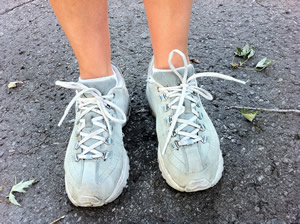Foot-strike and Avoiding Injuries
 Much has been said and written by sports scientists and coaches about foot-strike (how and where the foot makes contact with the ground), some of it is contradictory. If there is a consensus, it appears to be that where (in relation to your body) your foot hits the floor is more important than how it lands.
Much has been said and written by sports scientists and coaches about foot-strike (how and where the foot makes contact with the ground), some of it is contradictory. If there is a consensus, it appears to be that where (in relation to your body) your foot hits the floor is more important than how it lands.
This view is supported by Jay Dicharry, a running injury expert and physical therapist, who states: “By moving the foot-strike closer to the body, a lot of runners will land more on their midfoot, but some will still land on their heel, and that’s totally OK. Likewise, there are plenty of over-striding forefoot strikers out there.”
To improve foot-strike, Dicharry advocates wearing lighter shoes with a more level heel-to-toe incline angle and increasing step cadence by reducing stride length.
He says 50 to 80 per cent of runners are injured every year, and that many of these problems arise from a runner applying too much force on a repetitive basis. To lessen the risk of injury, Dicharry recommends running with minimal musculoskeletal strain and at the lowest metabolic rate.

